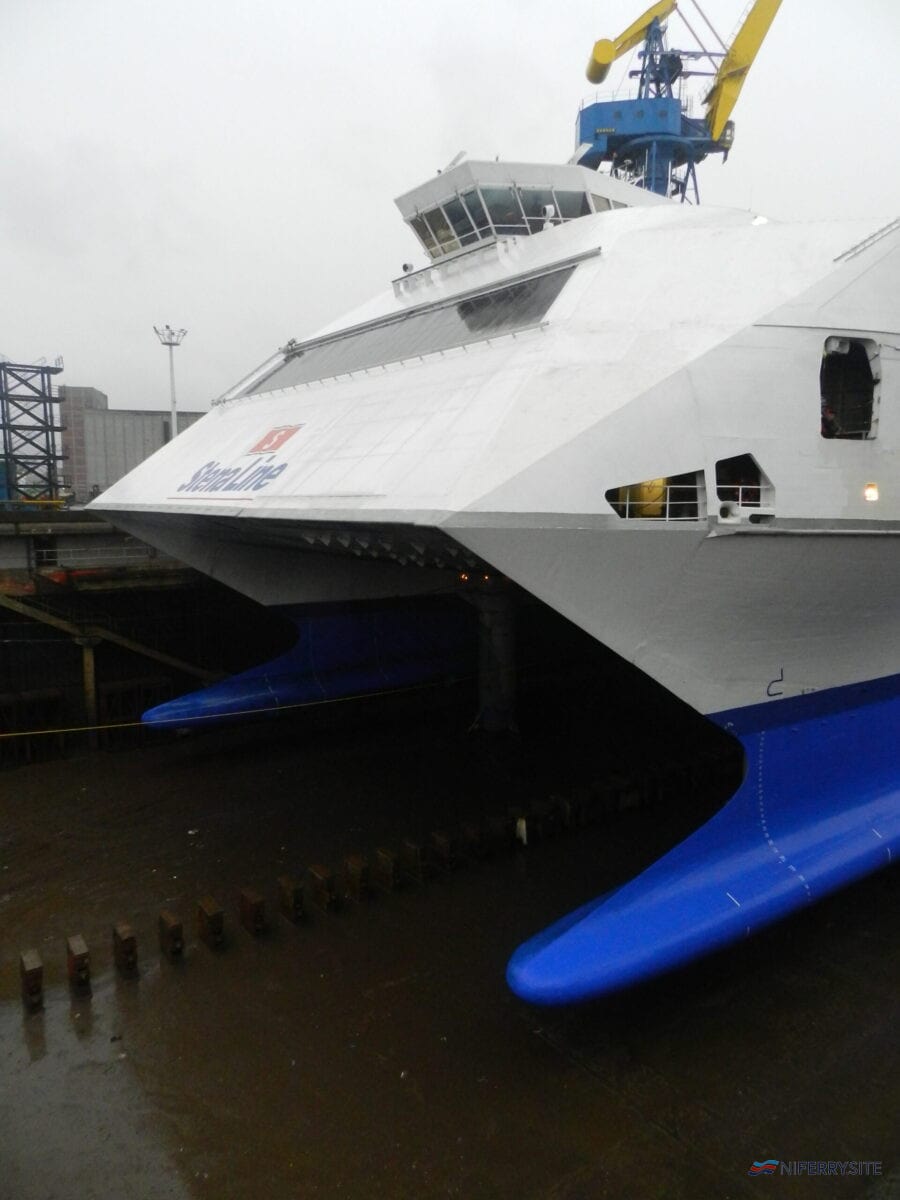Over the years, I have been fortunate to be able to visit and photograph many Irish Sea ferries in the Belfast Dry Dock (BDD) of Harland and Wolff.
Traditionally, the winter months are used to take ships out of service and send them for refit. This coincides with the quietest time of the year for ferry operators, post Christmas. This results in minimal disruption to services.
STENA CALEDONIA
My first visit to Harland and Wolff was back in 2004 when I took some photos of the STENA CALEDONIA in dry dock. I didn’t venture to the dock floor on this occasion. It wasn’t until March 2011 that I returned to the yard. On that occasion I was accompanied and shown around by Senior Master, Captain Murray Paterson. This was to be the last time the ship was dry docked for Stena Line service. It was also the final time that she was serviced by the yard from which she was built.









STENA EXPLORER HSS
The lead vessel, STENA EXPLORER, in the trio of HSS (High-Speed Sea Service) catamarans remained in service the longest. The second HSS, her younger Belfast-Stranraer sister STENA VOYAGER was withdrawn in November 2011. She was subsequently towed to a Stena Metall recycling plant in Landskrona, Sweden in May 2013.
The third example and youngest sister, STENA DISCOVERY was removed from service between Harwich and Hoek van Holland in 2007. She spent more than 2 years laid up at Belfast Harbour before being sold to Venezuelan operators. She never saw service in South America, and was scrapped in Turkey in 2015.
STENA EXPLORER visited Harland and Wolff for her final dry dock in December 2012, when I captured these images. The craft was finally retired from service in September 2014. H&W were the only yard capable of maintaining the three HSS’s in dry dock thanks to the specially constructed towers used to rest the craft on.








EXPRESS
By happy coincidence, when visiting the STENA EUROPE at refit in January 2013, she was sharing the dry dock with the former P&O Larne-Cairnryan/Troon fastcraft EXPRESS. The InCat vessel lay on the blocks forward of the Fishguard veteran and cut quite a stark profile in comparison with the 1981-built traditional ferry.








The second in our series of four features continues tomorrow.
